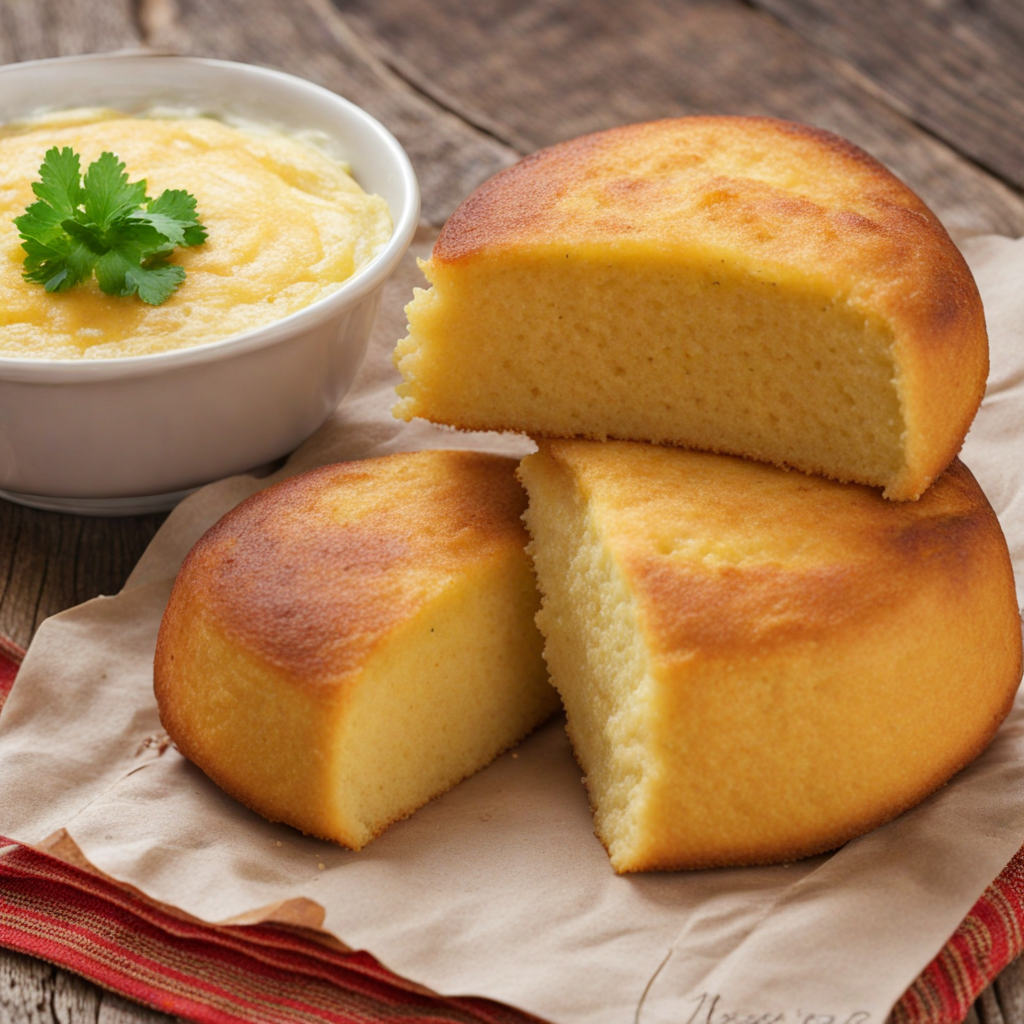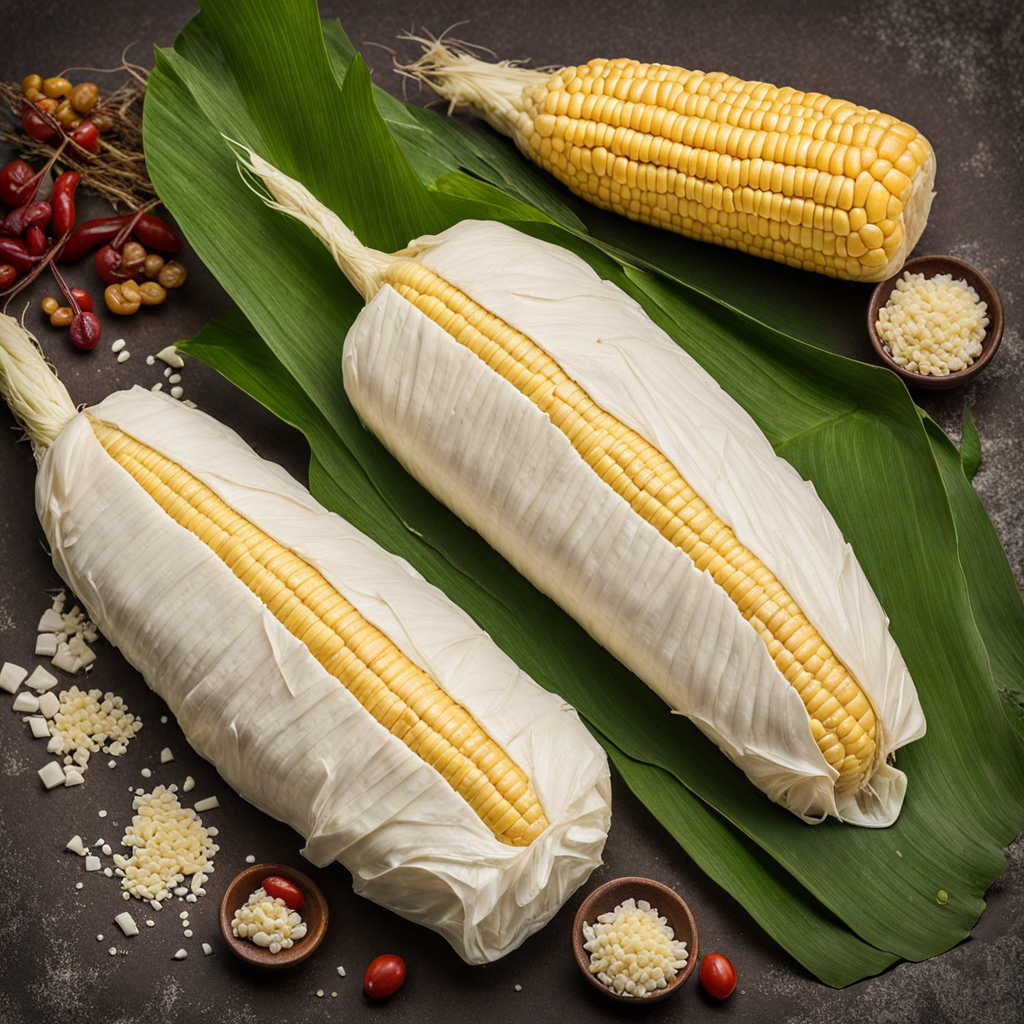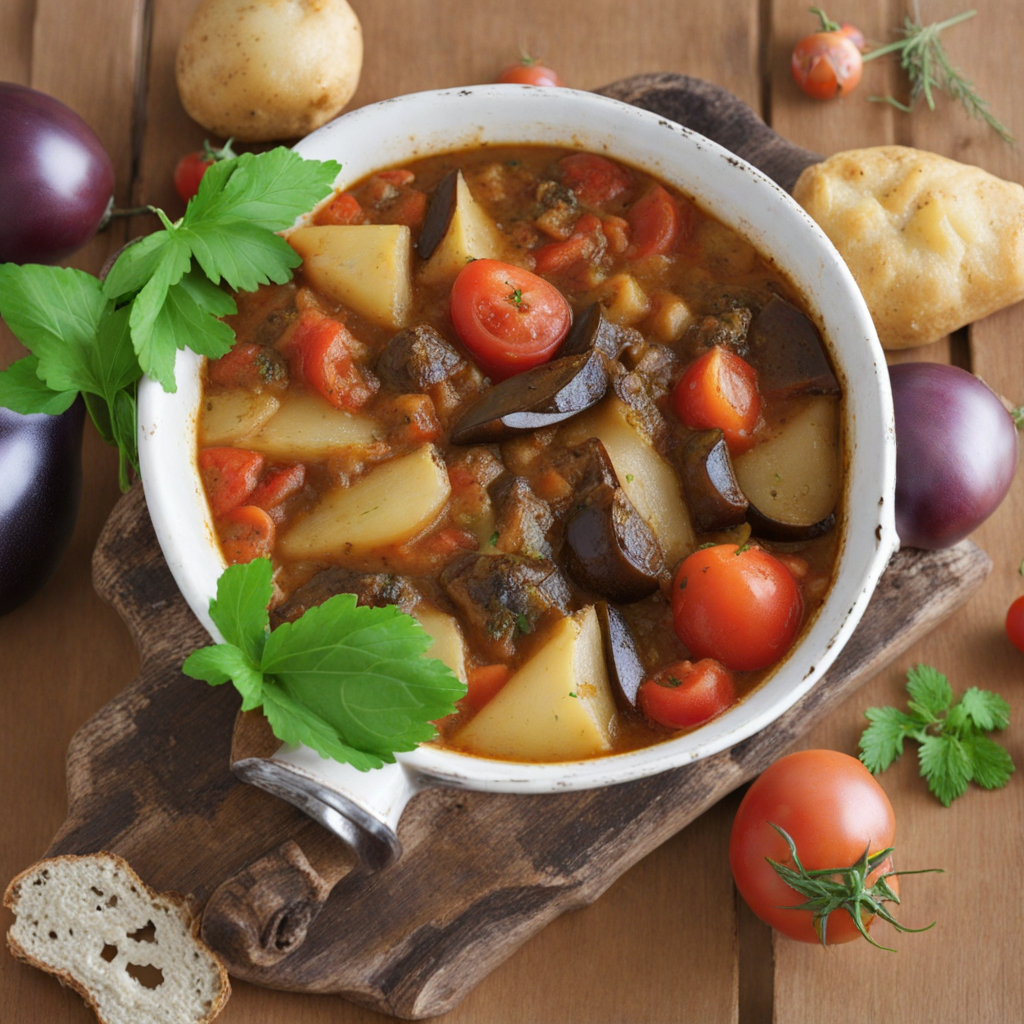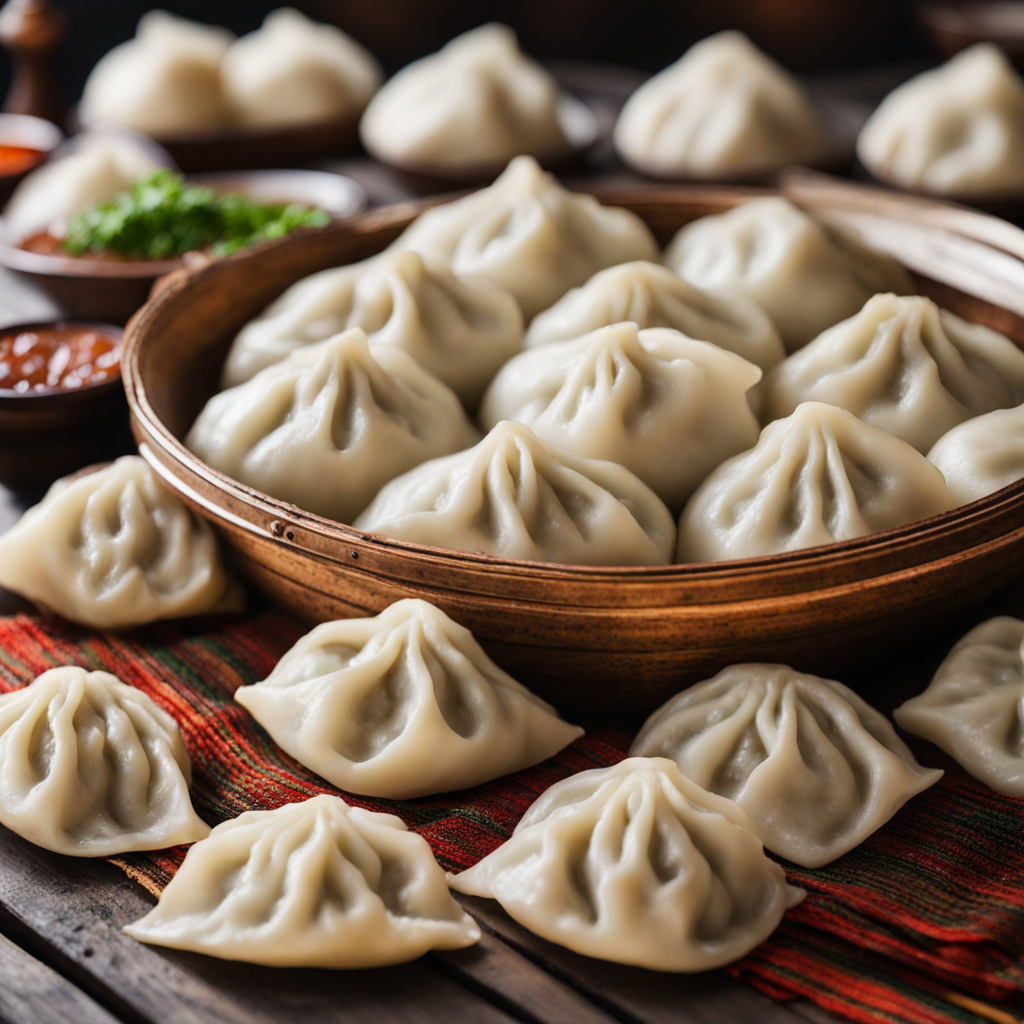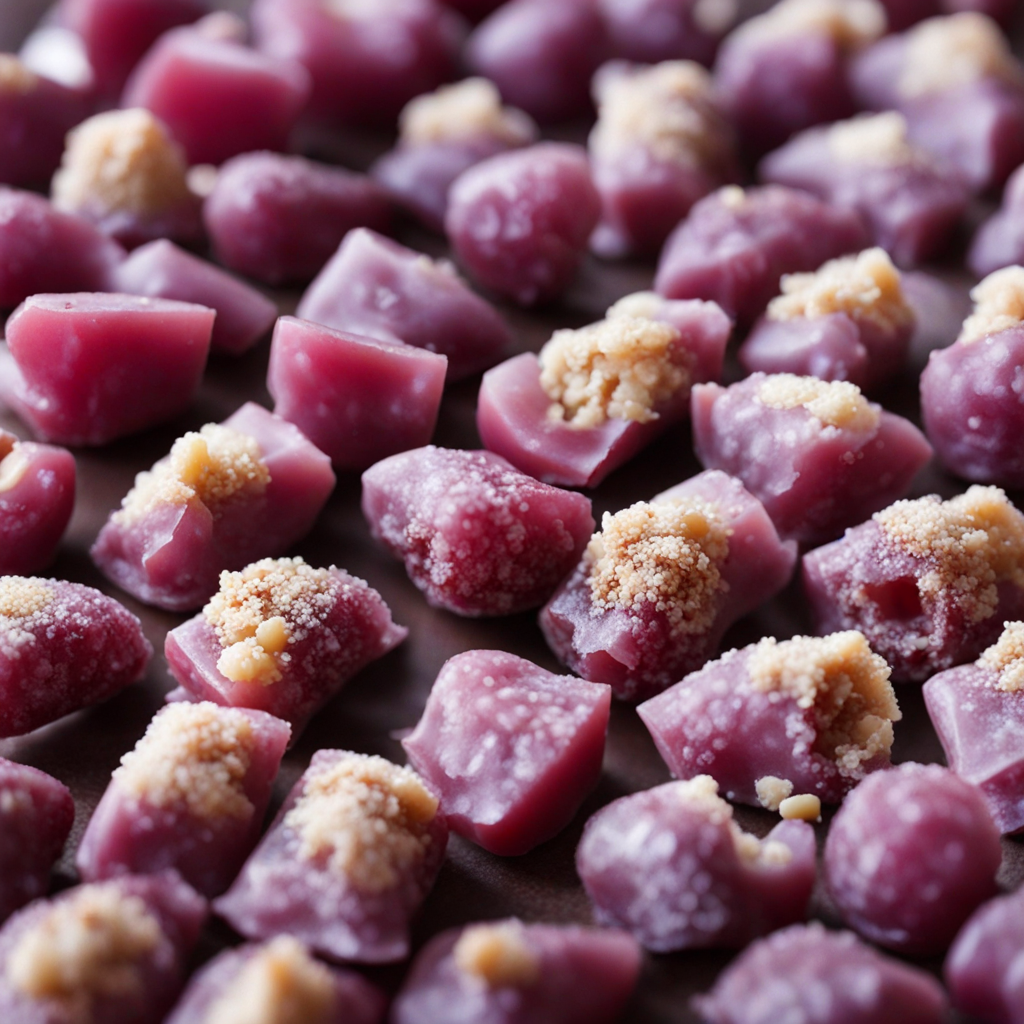Chvishtari
Chvishtari is a delightful Georgian dish that showcases the country's rich culinary heritage through its unique flavors and textures. At its core, Chvishtari consists of cornmeal-based dough, which is expertly mixed with cheese, typically sulguni, a semi-salty, stretchy cheese that melts beautifully. The combination of the slightly sweet cornmeal and the savory, tangy cheese creates a harmonious balance that captivates the palate. This dish is often prepared in a skillet, resulting in a crispy exterior that contrasts perfectly with the gooey, cheesy interior, making each bite an indulgent experience. What sets Chvishtari apart is the method of preparation, which often involves grilling or frying the stuffed cornmeal cakes. This technique imbues the dish with a smoky flavor and adds a delightful crunch to the outer layer. The use of fresh herbs, such as cilantro or dill, can elevate the dish even further, providing a refreshing touch that complements the richness of the cheese. Served hot and often accompanied by a side of yogurt or a fresh salad, Chvishtari is a comforting yet sophisticated dish that embodies the essence of Georgian cuisine. As you explore Chvishtari, you’ll find it is not just a meal but an experience that reflects the warmth and hospitality of Georgian culture. Whether enjoyed as a snack, appetizer, or main course, this dish invites you to savor the flavors of Georgia, making it a must-try for anyone looking to expand their culinary horizons. The marriage of textures and tastes in Chvishtari promises a satisfying journey for your taste buds, leaving you eager to discover more of Georgia’s delectable offerings.
How It Became This Dish
The History of ჭვიშტარი (Chvishtari): Georgia's Cornbread Delight Georgia, the small but culturally rich nation at the crossroads of Eastern Europe and Western Asia, boasts a culinary heritage as diverse and vibrant as its landscape. Among its many traditional dishes, one stands out for its rustic charm and deep-rooted significance: ჭვიშტარი (Chvishtari). This cornbread, often enjoyed as a side dish or snack, encapsulates the essence of Georgian culinary traditions, reflecting the country’s agricultural history, regional variations, and communal values. Origins of Chvishtari The roots of Chvishtari trace back to the ancient agricultural practices of Georgia, where corn (maize) was introduced to the region in the 16th century. Originally from the Americas, maize was quickly embraced by local farmers for its adaptability to the varied Georgian climate and its high yield. The cultivation of corn became prevalent in western Georgia, particularly in regions like Samegrelo and Guria, where the fertile soil and favorable climate allowed for abundant harvests. Chvishtari is traditionally made from a simple mixture of cornmeal, water, and sometimes dairy, such as milk or cheese. The simplicity of its ingredients reflects the agrarian lifestyle of rural Georgians, who relied on locally sourced products. This cornbread is often baked in a clay oven, or "tone," a method that enhances its flavor and texture, giving it a crispy crust with a soft, moist interior. Cultural Significance In Georgia, food is not merely sustenance; it is a vehicle for community, hospitality, and cultural identity. Chvishtari embodies these values. It is often served during festive occasions, family gatherings, and communal meals, symbolizing warmth and togetherness. The act of sharing food, particularly homemade dishes like Chvishtari, fosters bonds among family and friends, reinforcing the importance of community. Chvishtari also has a significant place in the traditional Georgian feast, known as a "supra." During these elaborate gatherings, hosts prepare an array of dishes to showcase their hospitality. While chvishtari may not always be the centerpiece, it serves as a comforting accompaniment to more elaborate dishes, such as stews, grilled meats, and dairy products. Its versatility allows it to complement a wide range of flavors, from savory to tangy, making it a beloved staple on Georgian tables. Development Over Time As Georgian society evolved, so too did the preparation and presentation of Chvishtari. In the early 20th century, particularly during the Soviet era, traditional foods began to undergo changes. Urbanization and migration led to a fusion of culinary practices, and while Chvishtari remained popular, it began to be adapted to modern tastes. Urban dwellers sought quicker, more convenient methods of preparation, leading to variations in the recipe that incorporated additional ingredients, such as eggs or butter, to create a richer taste and texture. The 1990s brought a resurgence of interest in traditional Georgian cuisine as the country emerged from the Soviet Union. Amidst a renewed appreciation for cultural heritage, home cooks and professional chefs alike began to explore and celebrate the authenticity of traditional dishes. Chvishtari saw a revival, with families passing down cherished recipes, often adding their personal touches while honoring the core elements of the dish. Variations and Regional Influences One of the fascinating aspects of Chvishtari is its regional variations across Georgia. In Samegrelo, for instance, it is often made with a generous amount of cheese, lending a rich, savory flavor that makes it especially popular among locals. This version, sometimes referred to as "Chvishtari with cheese," showcases the region's dairy-rich culture and highlights the importance of cheese in Georgian cuisine. In Guria, another region where Chvishtari is popular, the dish may include additional spices or herbs, reflecting local agricultural practices and culinary preferences. Here, it is not unusual to find Chvishtari served with a side of spicy adjika, a traditional Georgian condiment made from chili peppers, garlic, and various spices, adding an extra layer of flavor to the dish. The influence of neighboring cultures over centuries has also shaped Chvishtari’s evolution. Turkish, Persian, and Armenian cuisines have all left their mark on Georgian food, leading to the incorporation of various techniques and flavors into traditional recipes. While the core identity of Chvishtari remains intact, these influences have contributed to its diversity, making it a unique representation of Georgia’s multicultural tapestry. Chvishtari in Modern Context In contemporary Georgia, Chvishtari continues to hold a cherished place in the hearts of families and food enthusiasts. With the rise of culinary tourism, many visitors are eager to experience authentic Georgian food, and Chvishtari often finds its way onto restaurant menus. Chefs are experimenting with modern interpretations, creating variations that incorporate seasonal ingredients or innovative cooking methods, while still paying homage to the dish's roots. Moreover, the increasing global interest in traditional and artisanal foods has led to a resurgence in the popularity of Chvishtari beyond Georgia’s borders. International food festivals and culinary events have introduced this delightful cornbread to new audiences, allowing people from diverse backgrounds to appreciate its unique flavor and cultural significance. Conclusion Chvishtari is more than just cornbread; it is a testament to Georgia's rich agricultural heritage, communal values, and culinary evolution. As it has adapted over time to reflect changing tastes and influences, it remains a beloved dish that connects generations of Georgians to their past, their families, and their culture. Today, as the world continues to embrace traditional foods, Chvishtari stands as a delicious symbol of Georgia’s enduring culinary legacy, inviting all to experience the warmth and hospitality that is at the heart of Georgian cuisine.
You may like
Discover local flavors from Georgia



